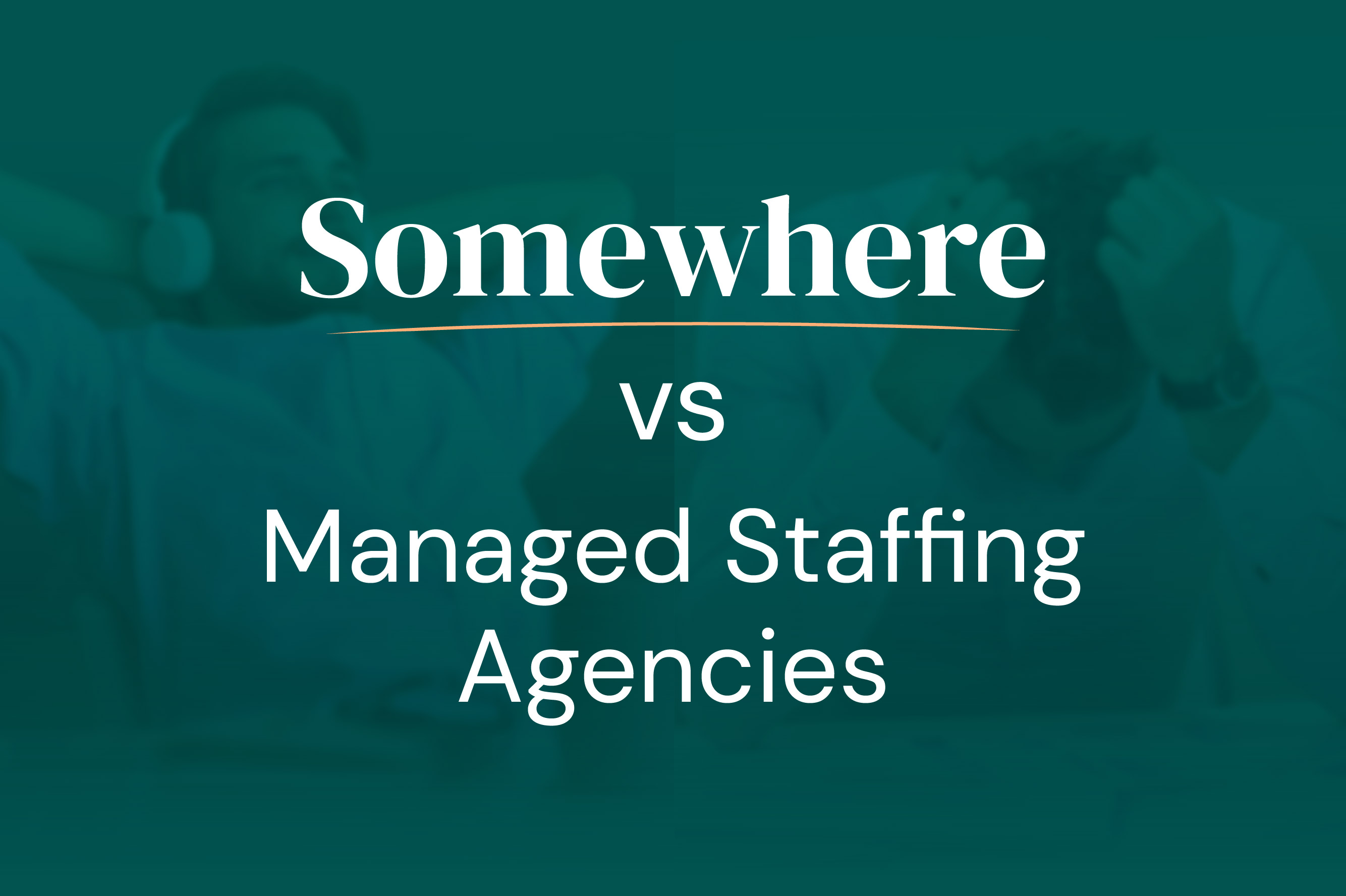Not long ago, I got a call from a founder who had just let go of her first ops hire. The team was only five people, moving fast, and every misstep was magnified.
On paper, the guy looked ideal: impressive background, smooth in interviews, the works. But just a few weeks in, it was obvious he wasn't wired for startup speed. The fallout? Product delays, team tension, and the founder stuck in damage control mode for the next month.
I jumped in to help rework the role, sharpen the interview process, and run a tight, targeted search. Within four weeks, we had someone new on board. Someone who understood the chaos and rhythm of startup life, leaned into action, and meshed with the team dynamic. That hire ended up being critical to their growth story over the next three years.
Here's the thing: small businesses don't get endless hiring tries. Each person you bring in helps shape the way you work, the speed you move, and the experience your customers get.
This guide lays out how to get hiring right from the beginning. Step by step.
Three Hiring Rules Every Small Business Owner Should Know
Hiring isn't just a checkbox; it's one of your highest-leverage moves. You're not just plugging holes; you're choosing the people who will help shape your brand, your workflow, and your team culture. Over the years, after working with a lot of small and early-stage companies, I keep coming back to these three hiring principles:
1. Don't Start Hiring Until You've Defined Success
Vague roles lead to vague results. Before you post a job, get super clear: What will success look like after 90 days? 180? If you can't answer that, you're not ready to hire yet.
2. Hire for Trajectory, Not Perfection
Credentials can be shiny, but they're not always what you need. In a small team, someone's ability to learn, adapt, and stay gritty will usually get you further than a flawless resume.
3. Your Hiring Process Reflects Your Business
Every message, every interaction, every interview: it's all a window into how you run things. Candidates are watching. Make sure your process shows off what makes your company worth joining.
These aren't complex rules, but when things get hectic, they're often the first things to fall through the cracks. The rest of this guide will show you how to bake these ideas into your actual process.

Why Hiring Matters More When You're a Small Business
Big companies can absorb a bad hire. You can't. When you're running lean (maybe five or ten people), a single misstep can ripple through the entire business: workloads get heavier, morale dips, projects stall, and yes, cash flow suffers.
The U.S. Department of Labor estimates that one bad hire can cost up to 30% of that person's annual salary. But what stings more is the loss of momentum. I've seen founders lose months trying to clean up the mess, retrain teams, rebuild trust, and miss windows of opportunity.
Flip that around, though, and a great hire? That can change everything. They own problems without being asked, boost the team's overall performance, and give you breathing room to focus on growth. I say it often: hiring isn't just operations; it's strategy.
Let's talk about how to do it right.
How to Hire Well: A Step-by-Step Small Business Process
Hiring in a small business is about accuracy, not volume. You might only have one shot to fill a critical gap. So, your process needs to be clear, aligned, and built to move fast.
Define Role and Business Impact
Start with the big picture. What problem is this person going to solve? What will they own in their first 90 days? Don't just borrow job descriptions from bigger companies. They're usually bloated or irrelevant.
Instead, write an "impact statement." Something like, "This role will reduce churn by improving onboarding," or "This person will unblock delivery by owning sprint planning." That becomes your north star.
Write the Job Description That Works
Ditch the fluff. Your job post should feel like it's talking directly to the kind of person you're hoping to attract. Include:
- A quick intro to your company and team
- Key responsibilities (focus on outcomes, not just to-dos)
- Required traits and skills (stick to 3–5 max)
- Growth opportunities (what they'll get, not just what you need)
And yes, tone matters. If you're looking for someone who's comfortable with ambiguity, your post should sound like it was written by a human, not a compliance department.
Source Candidates Cost-Effectively
You don't need a fat budget. You need smart channels. Try:
- Referrals: your network, vendors, even past clients
- Niche job boards: often better fit than generic sites
- Community groups: Slack channels, founder forums, or a simple, honest LinkedIn post that explains your mission and who you're looking for
I've seen standout hires come through nothing more than a well-written post and a few direct asks.
Interview for Fit and Future Growth
You need someone who can grow with the role, not just check today's boxes. Design your interview loop to test:
- Competency: Can they actually do the core parts of the job?
- Problem-solving: Toss them a relevant mini challenge.
- Cultural fit: Ask how they deal with feedback, shifting priorities, or interpersonal tension.
Use panels when you can (helps reduce bias), but don't overcomplicate it. No one wants to sit through six rounds for a five-person company.
Use Tools to Streamline
Even small teams can get more efficient with the right tools. You don't need a full-blown HR system; just tools that help you cut down on manual work and stay consistent.
- Airtable or Notion: Great for lightweight pipelines and tracking.
- Calendly: Saves time and shows candidates you respect them.
- Scorecards: Use a shared form to rate candidates consistently (keeps bias in check).
- Asynchronous screening: Tools like Loom or Willo let candidates send intros or quick samples.
And if you're planning to hire repeatedly, consider a lightweight ATS like Ashby, Teamtailor, or BreezyHR. It's not just about efficiency; it raises your game.
Things to Keep In Mind As You Grow Your Team
Hiring is just the beginning. Once the offer is signed, the real work kicks in. Here are a few things that often get missed, but make a big difference in how successful that new hire turns out to be.
Budgeting for the Real Costs
It's not just salary. Hiring takes:
- Time: Every hour interviewing is an hour not spent building.
- Onboarding: Most new hires need 1–3 months to hit full stride.
- Overhead: Software licenses, payroll setup, legal support. It all adds up.
Model the full cost of the hire before you start your search. It helps you stay grounded and prevents ugly surprises down the line.
Culture and Retention from Day One
Every early hire shapes your culture, whether you mean for it or not. If you don't define how your team operates, your first few hires will.
To set the right tone:
- Be clear about expectations, how feedback works, and what success looks like.
- Assign someone (anyone) to check in regularly with new hires.
- Give people real responsibility early. Great hires want to contribute, not wait around.
Retention isn't just about comp. People stay when they feel supported, seen, and stretched.

Lean Alternatives: Freelancers, Contractors, Trial Periods
Not every need calls for a full-time role. One of the most expensive mistakes I've seen is hiring full-time when a contract or trial would've done the job.
Ask yourself:
- Is this a long-term need or a one-off?
- Could we test the waters with a freelancer?
- What happens if we over-hire and the demand drops?
I've saved clients serious time and money by helping them structure short-term contracts that turned into long-term wins. Especially for ops, marketing, or finance. This approach can bring clarity before you commit.
How to Reduce Risk When Hiring Your First Staff
Your early hires are high-leverage bets. Here's how to make smarter ones.
Benchmarking Expectations and Salary
Reality check before you post. Don't expect a "head of marketing" for intern pay. Use tools like:
- Levels.fyi
- Glassdoor
- Oyster or Deel (for global comp)
Then match your job scope to your budget. Misalignment here wastes everyone's time.
Try Before You Buy
When in doubt, test it first:
- Short-term project with clear deliverables
- 30-day contract with goals and a conversion plan
- Part-time or fractional engagement
One founder I worked with brought on an ops hire through a six-week trial focused on just cleaning up their CRM. The results? Obvious. The full-time hire followed naturally.
Get Real with References and Feedback
Don't rush reference checks; they're where the patterns show. Ask:
- What kind of environment helped them thrive?
- How did they handle stress, change, or pushback?
- Would you hire them again?
You're not looking for perfection; you're looking for alignment.
Also, build feedback into onboarding. A few quick structures help:
- Weekly one-on-ones
- 30- and 60-day check-ins
- A simple "what good looks like" rubric
Early course-correction is a whole lot easier than fixing problems at month six.
Get the Hiring Help You Need
When you're spinning ten plates while hiring, it's easy to rush the process or settle for someone who's just "good enough." But that's how costly mis-hires happen.
A good hiring partner can step in where you're stretched, help you frame the role, surface stronger candidates, or just run a smoother search.
At Somewhere, we specialize in helping small businesses hire smarter: globally, flexibly, and with clarity. If you're ready to stop guessing and start hiring with confidence, reach out using the form below. We'll help you find the right person, the first time.










.webp)



.jpeg)